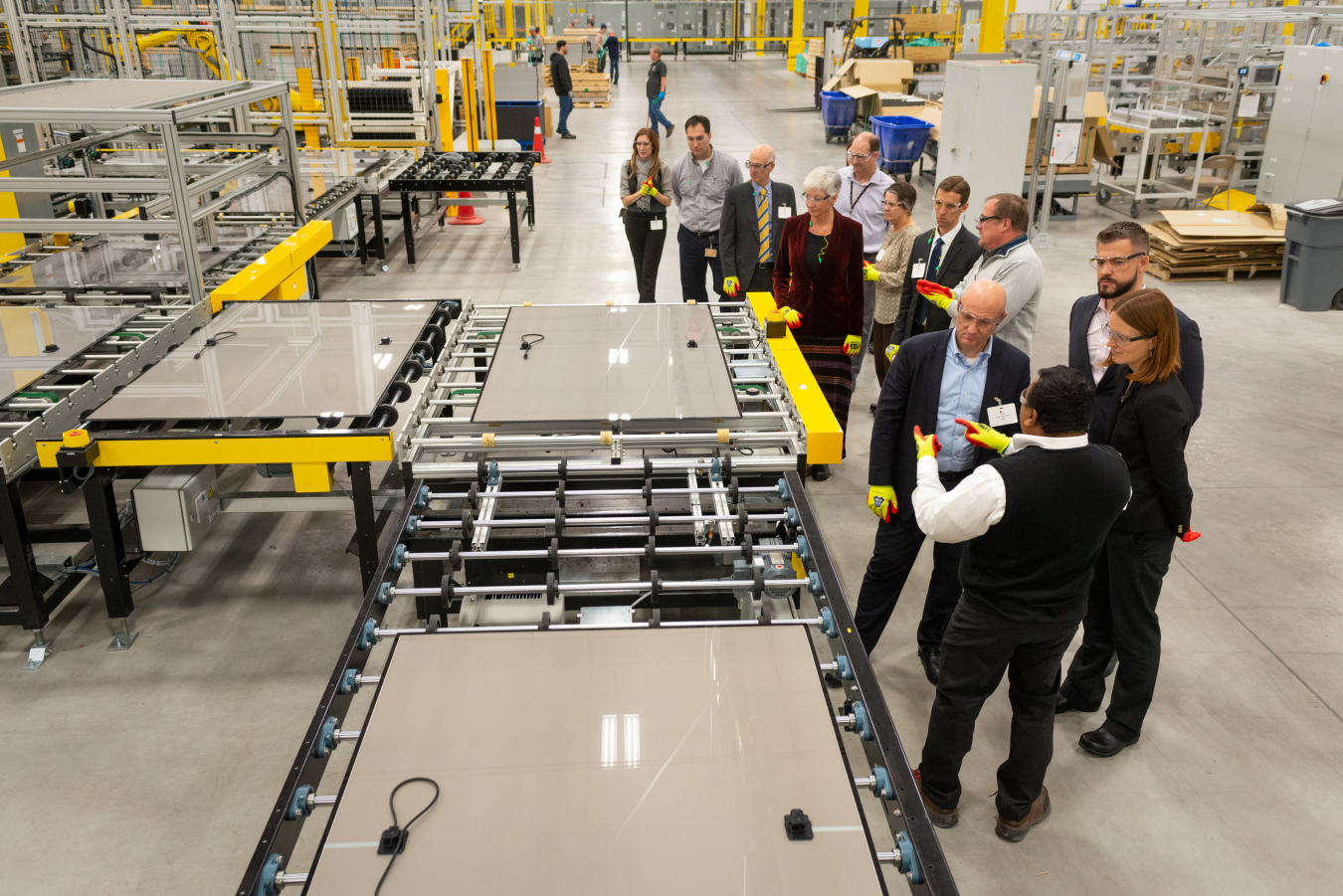A top priority for EERE is supporting game-changing manufacturing innovations across multiple sectors, including American solar panel manufacturing.
Office of Critical Minerals and Energy Innovation
April 7, 2020
First Solar Senior Vice President Jigish Trivedi shows Assistant Secretary Daniel R Simmons and Solar Energy Technologies Office Director Becca Jones-Albertus photovoltaic modules at the company’s new manufacturing facility.
One of the top priorities of the Office of Energy Efficiency and Renewable Energy (EERE) is increasing manufacturing in the United States, and our technology offices support game-changing manufacturing innovations across multiple sectors.
For example, in the past year U.S. solar photovoltaic (PV) module manufacturing has tripled, reaching 7.7 gigawatts (GW) per year of PV module production capacity.
As EERE’s assistant secretary, I wanted to see this progress up close. So in November 2019, I went to First Solar’s new, highly automated production facility in Ohio. First Solar makes cadmium telluride (CdTe) thin-film PV modules, the second-most common PV technology in the world after silicon.
The predecessor of First Solar (Solar Cells, Inc.) worked with the National Renewable Energy Laboratory (NREL) and a team of researchers to develop CdTe PV cells in the early 1990s. The U.S. Department of Energy (DOE) awarded the company funding to test its modules at NREL and scale up production. First Solar went from having one 50-megawatt manufacturing plant in 2008, to two plants that produce almost 2 GW of module manufacturing capacity across the United States—currently representing a quarter of all U.S. module manufacturing.
It takes just 3.5 hours to make a module at First Solar’s manufacturing facility, a very high rate of production. And the facility is only a few miles away from their R&D lab, making exchange of insights and information easy. First Solar has contracted with its glass supplier to build a nearby glass factory, too, which will reduce shipping costs, help improve processes faster, and create up to 150 jobs.
Over half of First Solar’s supply chain is based in the United States, and the company is seeking more local material and equipment suppliers to help with operations and maintenance. That effort aligns with the DOE’s mission to increase the rate, extent, and efficiency of U.S. manufacturing to benefit the economy.
EERE’s Solar Energy Technologies Office is working to ensure that innovative products are being developed and validated. The office recently announced $40 million in funding for 20 projects focused on manufacturing. These are early-stage product ideas that can hopefully lower solar costs and quickly achieve commercialization, as well as research projects that advance materials and manufacturing for both concentrating solar power plants and PV manufacturing. In addition, hundreds of competitors in the American-Made Solar Prize are developing innovations for the $3 million competition to strengthen U.S. solar manufacturing. You can read more about the first round of the prize and other EERE prizes in my blog post about launching innovations.
Today the U.S. has installed more than 2 million solar energy systems, thanks in large part to an 82 percent drop in module prices between 2010 and 2018. But for American solar panel manufacturing to be competitive in a fast changing energy landscape, continued innovation is critical. It’s EERE’s mission to help drive this innovation.
More by this author
-
Former Assistant Secretary for the Office of Energy Efficiency and Renewable Energy

